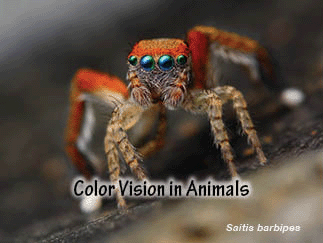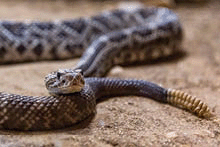Return to 2nd Quarter 2022 articles.

Color vision differences in various creatures result from eye design. Humans see color because we have three kinds of cones in the retina that respond to different energies of light. Our eyes have color cones sensitive to red, green, and blue. If light stimulates all three types of cones, we see it as white. When light stimulates red and green cones but not blue, we see yellow. Other combinations result in every color we can see. Some light energies do not trigger any of our cones, yet they affect us. For example, our eyes do not perceive ultraviolet energy, but UV rays can cause sunburn. Likewise, we cannot see infrared energy, but we can feel it as heat.

Animals have many color vision differences compared to humans. Why do deer not see the orange jackets that hunters frequently wear? A deer cannot see very much color at all. That means a hunter standing still in the woods wearing an orange camouflage outfit will be invisible to a deer but highly visible to other hunters. Some animals that do not see color can see light energies that we cannot. For example, a rattlesnake can see infrared, which is a lower energy than the visible light we see. A warm-blooded animal such as a rat or mouse gives off infrared radiation. A rattlesnake can see the infrared light coming from the rat on a dark night when there is no light visible to humans.

The National Science Foundation reported on a jumping spider (Saitis barbipes) found in Europe and North Africa with no red color sensitivity. A red ball would appear gray or black to those spiders. However, the males of these furry spiders have a bright red crown and legs. Even though potential mates cannot see the red, certain areas of the spider's body strongly absorb ultraviolet light. Those areas appear as “spider green” to other jumping spiders.

In addition to color vision differences, some animals have specialized vision tools to help them survive. For example, a water turtle's eyes have polarized corneas. That polarization allows the turtle to see reflected light because it is polarized parallel to the reflecting surface. A turtle needing to locate water will simply scan the horizon to see polarized light reflected from the water's surface. Other animals, such as birds or fish, have polaroids in a vertical orientation, enabling them to see through clouds or water without having to deal with glare.

Designing cells that can detect light is only part of the story. Making eyes that meet the peculiar needs of various animals is much more difficult. Your vision is just one more support for David's statement, “I will praise you, for I am fearfully and wonderfully made” (Psalm 139:14).
Picture credits:
© Tomas Rak. Image from big stock.com
© inarik. Image from big stock.com
© Seu Melhor. Image from big stock.com
© Karel Bock. Image from big stock.com
© RobMcKay. Image from big stock.com
Scripture links/references are from BibleGateway.com. Unhighlighted scriptures can be looked up at their website.
